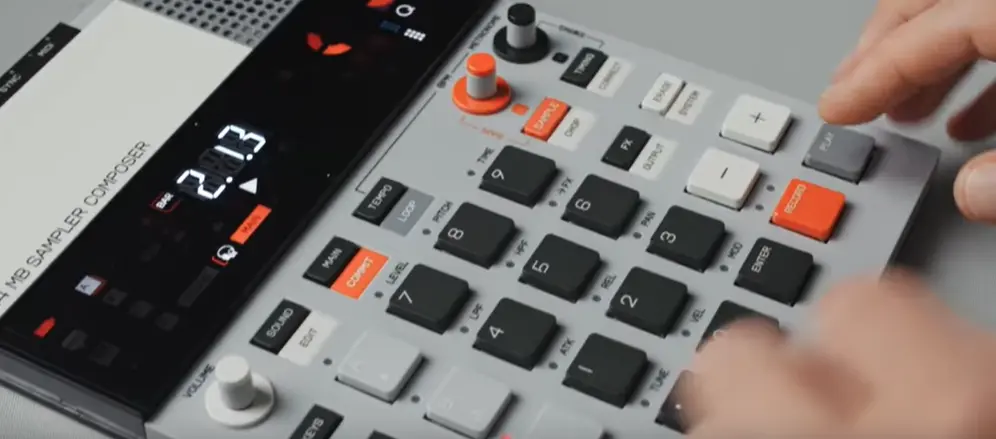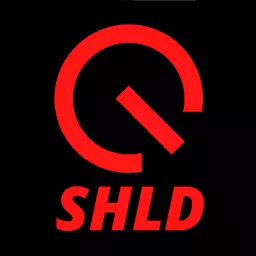EP-133 KO II vs Novation Circuit: A Battle of the Samplers. In the ever-evolving landscape of electronic music production, the choice of your hardware can make or break your creative journey. Today, we're putting two formidable contenders head-to-head: the EP-133 KO II by Teenage Engineering and the Novation Circuit Rhythm.
Updated with latest EP-133 firmware update 2.0.1!
Why compare them? Because both devices boast an impressive, and similar, array of features, and as they compete in the same price range (below $350 or 350 euros), it's time to dissect their strengths and weaknesses.
I'll try to update this article when we get more information, since both manufacturers are known to update frequently their products, they both have:
- Pressure Sensitive Controls: Both the EP-133 KO II and Circuit Rhythm offer the tactile experience of pressure-sensitive keys and knobs or faders, allowing for nuanced expression in your performances.
- Audio Connectivity: With stereo inputs and outputs, these samplers ensure your sonic creations are delivered in full fidelity.
- Sample Manipulation: Sample chopping, time stretching, manual slicing, and options for sample playback like looping and chromatic pitch control provide a robust toolkit for sonic experimentation.
- Resample internal audio: to stack audio effects and combine beats
- MIDI Integration: MIDI IN/OUT ports with TRS mini-jack connectors and analog sync capability open up possibilities for sequencing external MIDI gear, expanding your sonic palette.
- Sequencing Power: Both devices feature a step sequencer with quantized or un-quantized recording, enabling precise control over your musical compositions.
- Integrated Effects: Enjoy the convenience of integrated audio effects, complete with recording and automation capabilities. Master FX sends, including delay, reverb and much more, add depth to your productions.
- Portability: Designed for the road, these samplers come equipped with integrated batteries, ensuring you can create wherever inspiration strikes.
Next, let's dive into the differences between the EP-133 K.O.II and the Circuit Rhythm.
Teenage Engineering EP-133 strengths
- Built-in MIC and speaker
- 12 stereo voices / 16 mono (vs 8 voices on the Circuit)
- 999 sample slots for all projects (vs 128 per project on the Circuit)
- 99 patterns per track up to 99 bars (vs 8 patterns per track, maximum 8 bars XXcheck!)
- Stereo sampling (vs mono)
- More or less 12 minutes of global sample time (vs 4 minutes per project on the Circuit)
- Automatic tempo match by listening the incoming audio signal
- Song Mode to chain patterns

- On the FX side we have:
- Per sample: Envelope
- Per Track: master fx including delay, reverb, distortion, chorus, low pass filter, MIDI sidechain
- Global FX: one master compressor, plus Live FX to choose from 12 Punch-In fx (bitcrusher, looper, unison, stutter, scratch, reverse, low pass, tape stop). Live FX are controlled by the pressure you put on the pads.
Novation Circuit Rhythm advantages
- 8 monophonic tracks for samples, and up to 128 samples per project, vs 4 tracks (called groups) 4x12 samples on the EP-133
- 64 projects (vs 9 on the EP-133)
- Up to 4096 samples stored in 32 sample packs of 128 samples.
- Polyrhythm and setting the start and end steps of the patterns freely, not restricted to whole bars like the EP-133
- Steps probability and mutation to add random variations
- More sampling options: reverse and resample.
- Slice a sample to 4, 8 or 16 slices. You can easily edit the starting point and length of the slices
- Fixed length recording of samples
- Samples, and projects which can be stored on a microSD card.
- 32 Velocity-sensitive, backlit RGB keys

- For FX we have:
- Per sample: Envelope, Overdrive, HP Filter, LP Filter, Resonance
- Per track: Delay Send with 16 presets, Reverb Send with 8 presets, Side Chain with 7 presets
- Global FX: Grid FX that can be applied live: beat repeat, vinyl simulation, phaser, reverse, gater, bit crusher, and auto-filter.
- All effects parameters can be set via MIDI
Why would you choose the EP-133?
You will prefer the TE EP-133:
- if you want to sample in Stereo. The EP-133 is full stereo, whereas the Circuit Track can output a stereo signal, but will always sample in mono.
- if you need to play and record longer samples, up to 12 minutes (but you won't have sample time left for other projects)
- if you make very long patterns, up to 99 bars
- and more fun Live FX thanks to the pressure-sensitive effects
Why would you choose the Circuit Rhythm?
You will choose the Novation Circuit Rhythm:
- if you need more sample tweaking: you have more effects on the Novation Circuit, per sample, per track, and global ones.
- if you like to add random elements to your sequences, thanks to step probability and mutations
- if you need to sample while the sequencer is running. This is not possible on the EP-133.
What owners say?
Users appreciate the Circuit Rhythm for its intuitive workflow and portability. It's praised for being fun and easy to use, making it a great tool for both beginners and experienced producers looking to sketch out ideas quickly. The device encourages a more organic approach to beat-making, especially for those accustomed to computer-based production. Circuit Rhythm includes performance effects like stutters, filters, and reverb, making it more appealing for live use.
The EP-133 K.O. II is also recognized for its fun and straightforward sampling workflow. Users find it easy to get started with, and it encourages creative exploration. The device maintains the charm of the Pocket Operator series while offering a more user-friendly format. Some users buy Teenage Engineering products because of their distinct sonic character. The K.O. II has a gritty, lo-fi sound that appeals to hip-hop, lo-fi beats, and experimental producers.
While both are portable, Circuit Rhythm has a built-in rechargeable battery, whereas K.O. II relies on AAA batteries. Some users prefer the convenience of USB charging.
My preferred budget sampler
Both samplers have great features and it's hard to find a clear winner, as the choice ultimately depends on your specific musical preferences, production workflow, and the sonic landscape you aim to explore.
Sample Tweaking vs. Stereo Sampling: If your workflow involves extensive sample tweaking and the use of a variety of effects, the Circuit Rhythm's FX arsenal might be the deciding factor. Conversely, if stereo sampling is paramount for your sonic vision, the EP-133 KO II takes the lead. Resampling is a crucial and powerful feature in music production, particularly in electronic music and sound design, and I don't know why it's not part of EP-133 features... Maybe in a future update? => Yes! version 2.0 of the firmware added resampling 😊
Pattern Length and Voice Count: If you find yourself crafting longer and more complex patterns, the EP-133 KO II's expanded pattern length and voice count might be the clincher. However, if your focus is on polyrhythmic experimentation, random sequences, the Circuit Rhythm offers a compelling alternative.
In the end, whether you align with the book-sized powerhouse of the EP-133 KO II or the sampling maestro that is the Circuit Rhythm, both devices promise to be reliable companions on your sonic journey. As updates roll in from these manufacturers, stay tuned for more insights into the evolving world of electronic music production. Happy producing!
If you want to support my blog, you can buy them using the affiliate links below 👍
- TE EP-133 KO II ⭐
- TE EP-133 KO II on Amazon ⭐
- Novation Circuit Rhythm ⭐
- Novation Circuit Rhythm on Amazon ⭐
Feel free to comment below if you find more information about the EP-133 and Rhythm 😊

Speak your mind